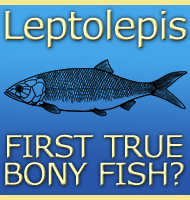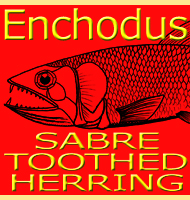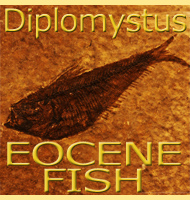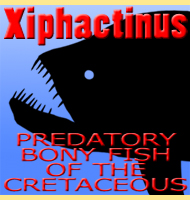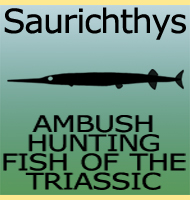


Pycnodus
Name: Pycnodus
(crowded teeth).
Phonetic: Pik-noe-dus.
Named By: Agassiz - 1835.
Classification: Chordata, Actinopterygii,
Pycnodontiformes, Pycnodontidae.
Species: P. platessus
(type), P. bicresta, P. flabellatus, P.
granulatus, P. jugleri, P. lametae, P. multicuspidatus, P.
minutus, P.
orbicularis, P. preufsii.
Diet: Carnivore.
Size: Roughly about 12 centimetres long, some
variation between species.
Known locations: Across Europe, also known from
north and east Africa, Saudi Arabia and India.
Time period: Oxfordian of the Jurassic through to
the Lutetian of the Eocene.
Fossil representation: Multiple individuals.
Pycnodus have deep bodies with greatly reduced pectoral and pelvic fins, altogether suggesting a slow swimming lifestyle. The name Pycnodus is derived from the batteries of grinding teeth within the mouth which would have been very efficient at processing shelled molluscs, small crustaceans and echinoderms (urchins and starfish). The broad temporal and geographic grange of the genus indicates that Pycnodus were highly successful in their ecological niche.
Further reading
- Eocene ichthyofauna from the Subathu Formation, Northwestern
Himalaya, India. - K. Kumar & R. S. Loyal -
1987.
----------------------------------------------------------------------------
Random favourites
 |
 |
 |
